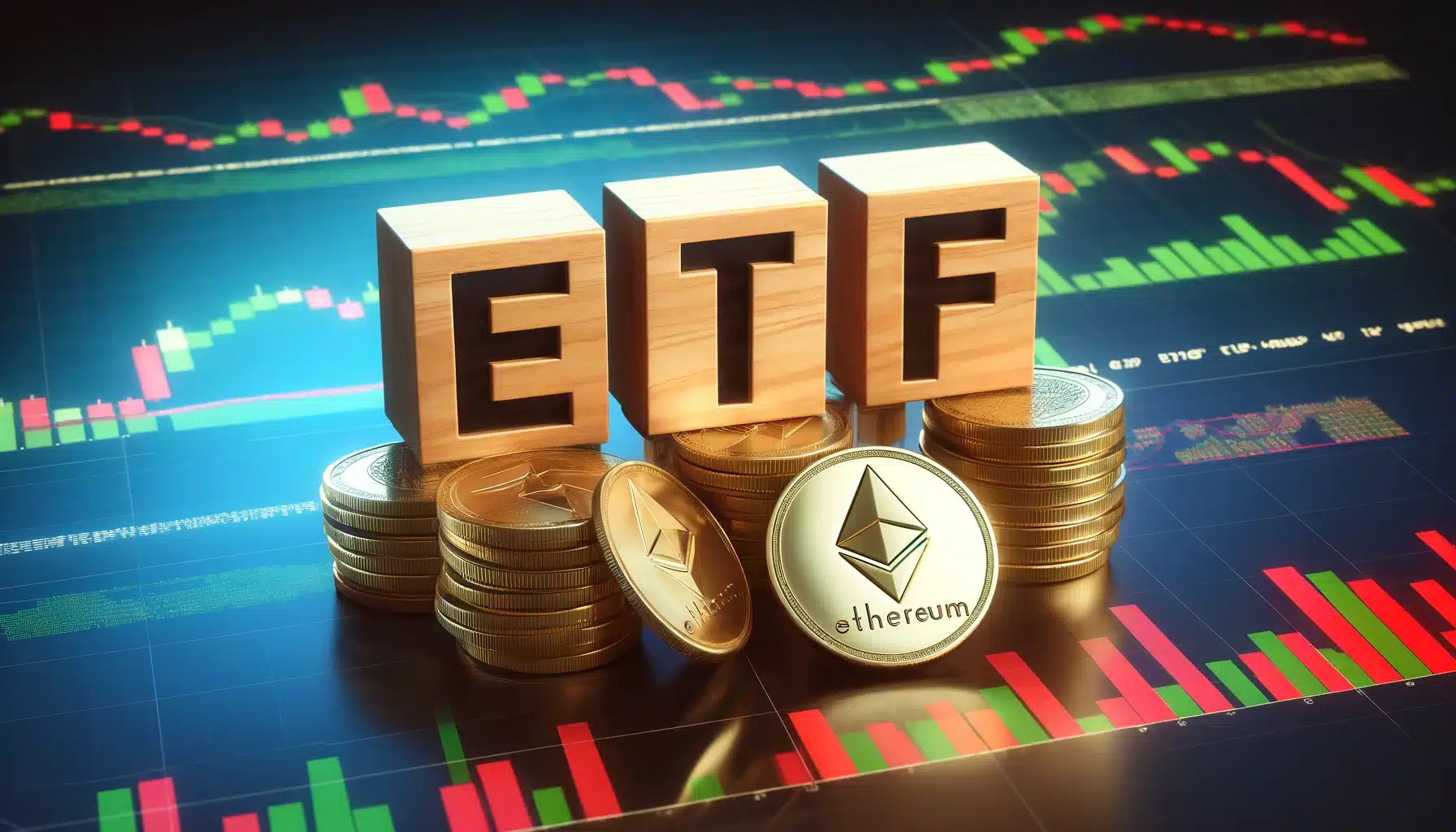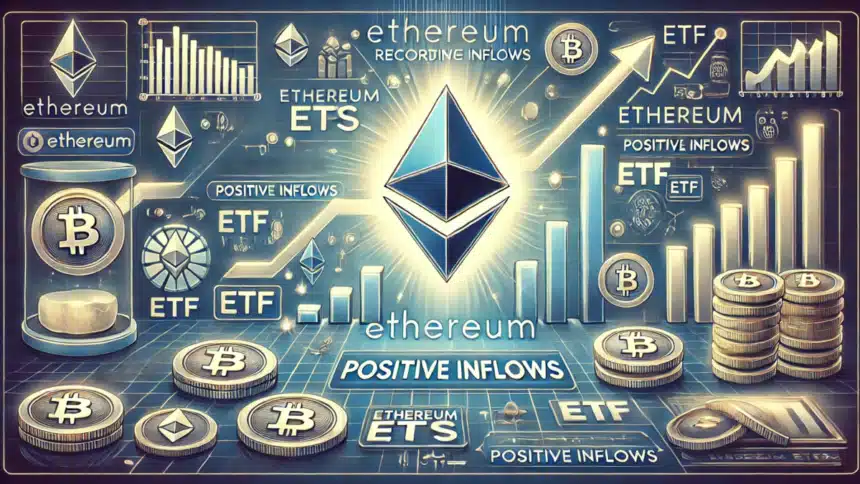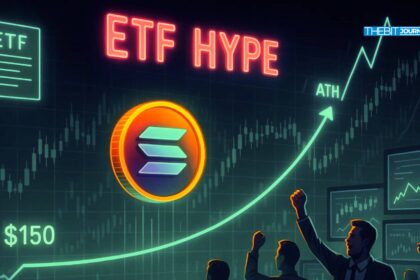On Tuesday, Ethereum ETF inflows surged with $24.34 million pouring into U.S. spot Ethereum ETFs, marking a continuation of positive momentum for these investment vehicles. This marks the second consecutive day of favorable flows for Ethereum ETFs. However, not all news is positive as Grayscale’s Ethereum Trust (ETHE) reported negative flows, reversing the previous day’s zero-net-flow status.
The disparity in performance among Ethereum ETFs highlights the evolving landscape of cryptocurrency investments. As Ethereum ETF inflows continue to grow, traditional players like Grayscale are facing increased competition and challenges. This shift underscores the growing preference among investors for regulated investment methods in Ethereum.

Breaking Down the Ethereum ETF Inflows
A closer look at Ethereum ETF inflows reveals nuanced investor behavior across different funds. Despite the overall upward trend, significant variations exist. On Tuesday, Grayscale’s ETHE experienced a net outflow of $31 million, according to data from SosoValue. This marked ETHE as the first spot ether fund to report such withdrawals, indicating that investors might be re-evaluating their positions in this product.
Conversely, other exchange-traded funds (ETFs) saw substantial inflows, compensating for ETHE’s losses. Leading the charge was BlackRock’s ETHA, which garnered an impressive $49.12 million, the highest among Ethereum ETFs. This follows a zero-net-flow day for ETHA previously, making this inflow particularly notable. Fidelity’s FETH and Invesco’s QETH also contributed to the positive trend with $5.41 million and $813,690 in net inflows, respectively.
On Tuesday, the combined trading volume for nine spot ether ETFs totaled approximately $191 million. Although this represents a decrease from Monday’s $285.9 million, it still reflects substantial investor activity. The ongoing Ethereum ETF inflows suggest a potential shift away from short-term trading towards a longer-term investment approach.
Comparative Performance of Bitcoin ETFs
While Ethereum ETF inflows are capturing attention, the Bitcoin ETF market also demonstrated strong performance. According to SosoValue, the 12 U.S.-based Bitcoin ETFs saw net inflows of $38.94 million on Tuesday, more than double the amount seen in Ethereum ETFs.
The largest Bitcoin ETF by net assets, BlackRock’s IBIT, received $34.55 million, surpassing other ETFs. This reinforces BlackRock’s leading position in both Bitcoin and Ethereum ETF markets. Bitwise’s BITB and Fidelity’s FBTC also experienced significant inflows, with BITB attracting $22.56 million and FBTC $16.54 million.

Despite the overall positive trend, not all Bitcoin ETFs fared well. Grayscale’s GBTC, for instance, saw nine consecutive days of negative flows, with $28.65 million exiting the fund. This ongoing trend reflects growing skepticism around Grayscale’s offerings amidst shifting dynamics in the crypto ETF market.
Market Impact and Price Movements
The surge in Ethereum ETF inflows and the broader positive trend in crypto ETFs appear to influence cryptocurrency prices favorably. Bitcoin’s price increased by 3.27% to $61,109 within 24 hours, as reported by The Block. Ethereum’s price also rose by 2.1%, reaching $2,713.
These price movements suggest a correlation between Ethereum ETF inflows and the overall performance of cryptocurrencies. Continued positive flows into Ethereum ETFs could bolster investor confidence and contribute to favorable price action in the underlying digital assets. However, it is important to remember that cryptocurrency prices are influenced by a variety of factors, with ETF flows being just one element.
The Evolving Landscape of Crypto ETFs
The latest developments in Ethereum ETF inflows highlight the rapidly changing nature of cryptocurrency investment products. Investors now have a wider array of options for accessing Ethereum through conventional financial instruments, with several companies offering spot Ethereum ETFs.
This diversification is likely driving the observed shifts in ETF flows, with some investors moving away from older products like Grayscale’s ETHE in favor of newer entrants such as BlackRock’s ETHA. This competitive environment may spur innovation and efficiency within the ETF industry, ultimately benefiting investors.

Moreover, the concurrent positive flows into both Ethereum and Bitcoin ETFs signify growing interest from both retail and institutional investors. These regulated products are bridging the gap between the cryptocurrency ecosystem and traditional financial systems, potentially enhancing accessibility and acceptance in the broader market.
Conclusion
The strong Ethereum ETF inflows, totaling $24 million, illustrate a robust investor appetite for Ethereum exposure through regulated financial products. As the Ethereum ETF landscape evolves, ongoing shifts in investor behavior and competitive dynamics will likely continue shaping the market. TheBITJournal remains committed to delivering in-depth insights into these developments, ensuring you stay informed on the latest trends in digital asset investments.





























